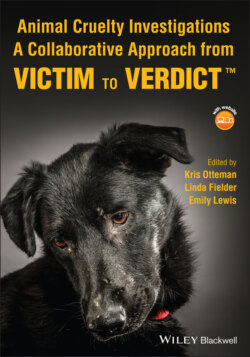Читать книгу Animal Cruelty Investigations - Группа авторов - Страница 135
3.6 Documentation
ОглавлениеDocumentation is critical to the success of every investigation. Approach every interaction with the mindset that “if it isn't documented, it didn't happen.” This is especially important in animal cases because the victims cannot speak; therefore, they cannot testify to the level of care and treatment they received. The investigator must be able to fill in the blanks.
Make detailed notes immediately after site inspections and interviews. When possible, record interviews so you have an exact account of what was said. Months and sometimes years will pass between the time an investigator submits a report to the courts and the day that case is heard at trial. Your notes, reports, photos, and recordings will serve you well, as you recall the facts on the witness stand.
Documentation is critical (Figure 3.5) when establishing facts about an animal's environment and access to resources like food and water. Always utilize photos and video whenever possible both to illustrate the conditions and to remind you of your findings. Make note of food in storage, the expiration dates of feed, the number of food and water bowls or troughs compared with the number of animals, the animals' demeanor when presented with food or a treat, and the body condition of the animals at issue.
Sometimes we feel compelled to collect food and water samples for testing, especially in cases where the food and water are fouled or expired. Lab testing can determine the nutritional characteristics of a bale of hay or identify chemicals or toxins in the water supply that might render it nonpotable. Keep in mind that sample collection, storage, and submission processes can be very specific and so investigators must be trained in those procedures and have the proper equipment on hand when utilizing these diagnostics, in order for them to be of value at trial.
Figure 3.5 Documentation of the environment through accurate notes, photography, and video is a critical component of every animal cruelty investigation.
Source: Oregon Humane Society.
